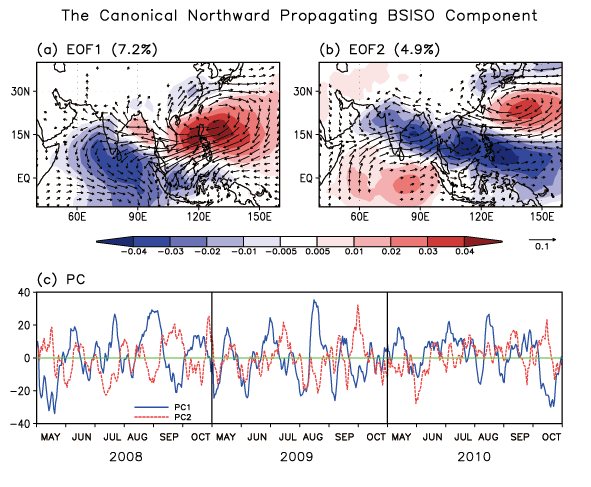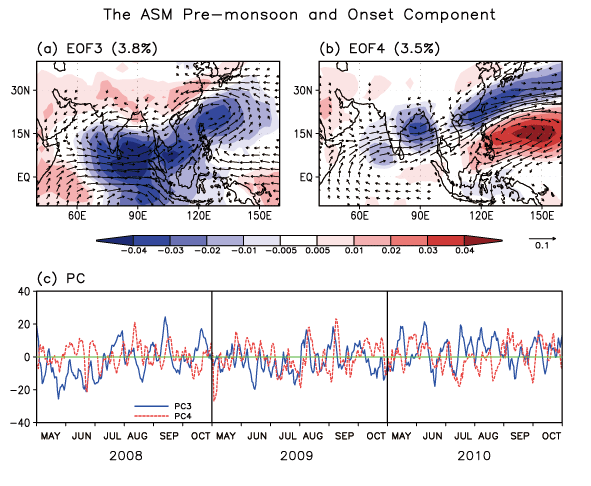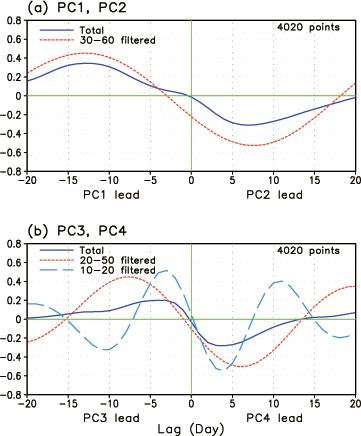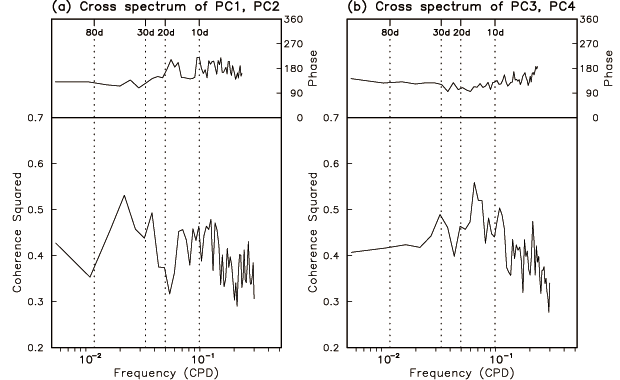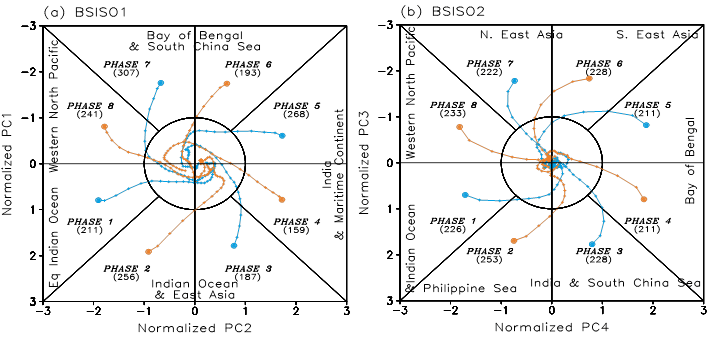|
The BSISO indices proposed were designed
to better represent fractional variance and the observed northward propagating
ISO over the entire ASM region than the RMM index. The method to define the new BSISO indices uses MV-EOF
analysis of daily mean OLR and 850-hPa zonal wind (U850) anomalies over the ASM
region (10S-40N, 40-160E) from 1
May to 31 October for the 30 years 1981-2010. The OLR and U850
anomalies were obtained by removing the slow annual cycle (mean and first three
harmonics of climatological annual variation) as well as the effect of
interannual variability by subtracting the running mean of the last 120 days as
in Wheeler and Hendon (2004). We do not apply any other time filtering. After
that, the two anomaly fields were each normalized by their area averaged
temporal standard deviation over the ASM region. The normalization factor used
is 33.04 W/m for OLR and 4.01 m/s for U850. After
applying the MV-EOF on the normalized OLR and U850 anomalies, we identified the
first four MV-EOF modes as important for representing the BSISO over the ASM
region. The percentage variance accounted for by each mode is 7.2, 4.9, 3.8,
and 3.5% respectively. Thus, the first four modes can account
for 19.4% of total daily variance of the combined OLR and U850 anomalies over
the ASM region. Although the percentage variance for each mode is small, they
are statistically distinguishable from each other and from higher modes
according to the rule of North et al. (1982) with an effective
number of degrees of freedom of 1520 among the total sample size of 5520
estimated following Livezey and Chen (1983). It is the principal component time
series, or projection coefficients (PCs), of the leading four modes that are
used to define the BSISO indices.
|
